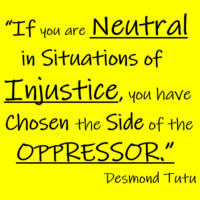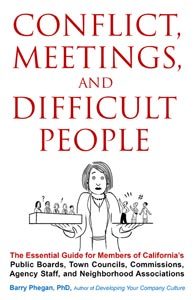 As a white, male, US citizen now exploring my own racism, I’m struck by a number of stories in my past that illustrate how I have profited and benefited from racism. If my stories spark memories of your own, please consider sharing them.
As a white, male, US citizen now exploring my own racism, I’m struck by a number of stories in my past that illustrate how I have profited and benefited from racism. If my stories spark memories of your own, please consider sharing them.
Learning U.S. Racism — Redlining
As an immigrant, I had to learn our distinctive, homegrown varieties of injustice and prejudice. In the mid-60s I came to the United States as a graduate student at Washington University, St. Louis. Some years later a fellow student asked me if I would like to buy a house. I had no significant savings and told him so. He said that didn’t matter and introduced me to a lawyer, Sue Simon.
Sue explained that her client was moving to a retirement home and would sell me her house for two-thirds of its appraised value. Sue would arrange an FHA loan for three-quarters of the appraised value. It sounded odd, but I’d lived in three countries before the United States and knew every culture had mysteriously unique ways. At the closing, they gave me the house keys and a check for almost one thousand dollars. Such a deal!
I later understood that I was the beneficiary of racism, in this case, a form of redlining. The house seller, an elderly White lady, did not want to be the first person on her block to sell to a Black. I was in my late-20s, naïvely unaware of the depth and implications of racism in the United States, particularly in St. Louis. Now I look back on that first house, clearly seeing how I directly benefited financially from racism and prejudice.
The Color of Law, by Richard Rothstein, describes the sad US history of legally supported structural racism, including redlining.
Learning U.S. Racism – Prejudice
Another brush with racism occurred years earlier on my first brief visit to the United States. A Jewish friend took me to a Jewish beach club on Long Island. He explained that it existed because the adjoining clubs would not admit Jews. At the time this didn’t strike me as racism, though it was clearly a form of prejudice. Now I know better.
Learning U.S. Racism – Murder
In the early 1970s I was Director of Development and Maintenance for the East St. Louis Housing Authority. Until my hiring, public housing was built by large statewide (always white) contractors, mostly controlled by the Democratic political machine centered in Chicago.
My goal was to keep the construction money in-town, creating local jobs in the almost entirely Black community. I worked closely with local Black builders developing small, one-house-at-a-time projects or remodels. The local craft unions were lily-white, but since the projects were being federally financed, they required non-discrimination.
In retaliation, members of the plumbers’ Local beat a new Black member to death with ax handles, leaving his body on the front steps of one of my unfinished units. The FBI and local police handled the investigation. In that moment I was shocked and stunned into inaction. What does a naïve, white, immigrant, 32-year-old architect, hired to localize federal housing construction, do with a murder? It was just one of several out-of-my-depth experiences, that a year later sent me back to school in Berkeley.
Learning U.S. Racism – Poisoning
The City of East St. Louis was a dumping ground for unwanted chemical plants and unwanted people. While working there in the 60’s I saw an aerial photograph of a paint manufacturing plant. Extending for perhaps 2 city blocks from the plant, in a giant circle and covering the ground and every house rooftop in this desperately poor neighborhood, was a bright white powder. That powder was probably white lead, lead carbonate — highly carcinogenic and since banned.
I understood the implications of that photo and did nothing. I still wonder what became of the adults and children who ingested the lead. The soil is probably still poisoned, and it is still a residential area. Because I was white and in a position of privilege, I could simply ignore the situation and get on with my job.
That lead poisoning was like the chemicals dumped by paper and chemical plants in the bayous of Alabama described in Arlie Russell Hochschild’s bestseller, Strangers in Their Own Land. She documents extended families completely devoured by cancer. I imagine the same unprosecuted killings in East St. Louis — from this paint plant and the nearby Monsanto Chemical plant.
Learning U.S. Racism – Apartheid Money
When I came to California, I used the proceeds from selling that St. Louis house as a down-payment on a tiny dilapidated two-bedroom house in North Berkeley. I enjoyed remodeling it, but with our growing family, we decided to move to something larger.
Before we even put the house on the market, we had a full-price cash offer. Our realtor friend said the buyer was the daughter of a white South African farmer who had cashed out as apartheid wound down. The family fled Johannesburg with a suitcase of cash.
In each of these situations I benefited from racism, always with the privilege to walk away unharmed — or even enhanced. While I paid no apparent price, others did. That’s white privilege.
The philosopher asks, “Can I be just in an unjust world?” I ask, “Can I be free of racism in a racist society?” My answer, “No way. As a member of my society, I am entangled.” With this clarity and given my privilege, I’m asking, what will I do to help end systemic racism? This may be a theme in my next blogs.
Please give me your ideas or suggestions on this or other blogs. I do appreciate your feedback.
Thank you.
me, Barry Phegan
Add Your Name below to my list to know when I have posted a new blog.





